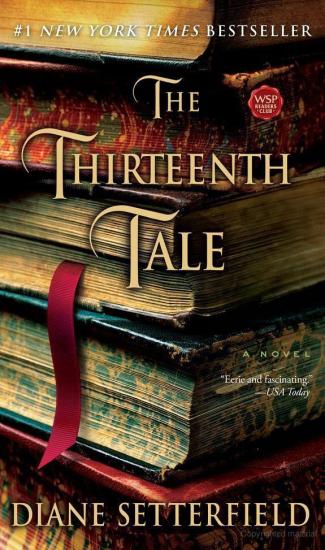
Rating: ****
Tags: Fiction, General, Literary, Literary Criticism, Historical, Romance, Female Friendship, Women Authors, Ghost, Recluses as Authors, Lang:en
Summary
Sometimes, when you open the door to the past, what you
confront is your destiny. Reclusive author Vida Winter, famous for her collection of
twelve enchanting stories, has spent the past six decades
penning a series of alternate lives for herself. Now old and
ailing, she is ready to reveal the truth about her
extraordinary existence and the violent and tragic past she
has kept secret for so long. Calling on Margaret Lea, a young
biographer troubled by her own painful history, Vida
disinters the life she meant to bury for good. Margaret is
mesmerized by the author's tale of gothic strangeness --
featuring the beautiful and willful Isabelle, the feral twins
Adeline and Emmeline, a ghost, a governess,a topiary garden
and a devastating fire. Together, Margaret and Vida confront
the ghosts that have haunted them while becoming, finally,
transformed by the truth themselves. Settle down to enjoy a rousing good ghost story with Diane
Setterfield's debut novel,
The Thirteenth Tale. Setterfield has rejuvenated the
genre with this closely plotted, clever foray into a world of
secrets, confused identities, lies, and half-truths. She
never cheats by pulling a rabbit out of a hat; this
atmospheric story hangs together perfectly. There are two heroines here: Vida Winter, a famous author,
whose life story is coming to an end, and Margaret Lea, a
young, unworldly, bookish girl who is a bookseller in her
father's shop. Vida has been confounding her biographers and
fans for years by giving everybody a different version of her
life, each time swearing it's the truth. Because of a
biography that Margaret has written about brothers, Vida
chooses Margaret to tell her story, all of it, for the first
time. At their initial meeting, the conversation begins: "You have given nineteen different versions of your life
story to journalists in the last two years alone." She [Vida] shrugged. "It's my profession. I'm a
storyteller." "I am a biographer, I work with facts." The game is afoot and Margaret must spend some time
sorting out whether or not Vida is actually ready to tell the
whole truth. There is more here of Margaret discovering than
of Vida cooperating wholeheartedly, but that is part of
Vida's plan. The transformative power of truth informs the
lives of both women by story's end, and
The Thirteenth Tale is finally and convincingly
told.
--Valerie Ryan
Former academic Setterfield pays tribute in her debut to
Brontë and du Maurier heroines: a plain girl gets
wrapped up in a dark, haunted ruin of a house, which guards
family secrets that are not hers and that she must discover
at her peril. Margaret Lea, a London bookseller's daughter,
has written an obscure biography that suggests deep
understanding of siblings. She is contacted by renowned aging
author Vida Winter, who finally wishes to tell her own,
long-hidden, life story. Margaret travels to Yorkshire, where
she interviews the dying writer, walks the remains of her
estate at Angelfield and tries to verify the old woman's tale
of a governess, a ghost and more than one abandoned baby.
With the aid of colorful Aurelius Love, Margaret puzzles out
generations of Angelfield: destructive Uncle Charlie; his
elusive sister, Isabelle; their unhappy parents; Isabelle's
twin daughters, Adeline and Emmeline; and the children's
caretakers. Contending with ghosts and with a (mostly) scary
bunch of living people, Setterfield's sensible heroine is,
like Jane Eyre, full of repressed feeling—and is
unprepared for both heartache and romance. And like Jane,
she's a real reader and makes a terrific narrator. That's
where the comparisons end, but Setterfield, who lives in
Yorkshire, offers graceful storytelling that has its own
pleasures.
(Sept.)
Amazon.com Review
From Publishers Weekly
Copyright © Reed Business Information, a division
of Reed Elsevier Inc. All rights reserved.